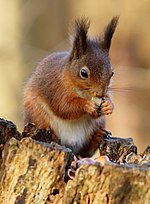Isle of Wight/Sandown Airport
Airports in EnglandAirports in South East EnglandBuildings and structures on the Isle of WightSandownTransport on the Isle of Wight ... and 2 more
United Kingdom airport stubsUse British English from May 2013

Isle of Wight/Sandown Airport (ICAO: EGHN) is an unlicensed aerodrome located 1 nautical mile (1.9 km; 1.2 mi) west of Sandown, Isle of Wight, England. It is close to the village of Lake. Isle of Wight Sandown Aerodrome formerly had a CAA Ordinary Licence (Number P883) that allows flights for the public transport of passengers or for flying instruction as authorised by the licensee (Isle of Wight Aviation Limited).
Excerpt from the Wikipedia article Isle of Wight/Sandown Airport (License: CC BY-SA 3.0, Authors, Images).Isle of Wight/Sandown Airport
Scotchells Brook Lane,
Geographical coordinates (GPS) Address External links Nearby Places Show on map
Geographical coordinates (GPS)
| Latitude | Longitude |
|---|---|
| N 50.653055555556 ° | E -1.1822222222222 ° |
Address
Sandown Airfield
Scotchells Brook Lane
PO36 0JP
England, United Kingdom
Open on Google Maps









